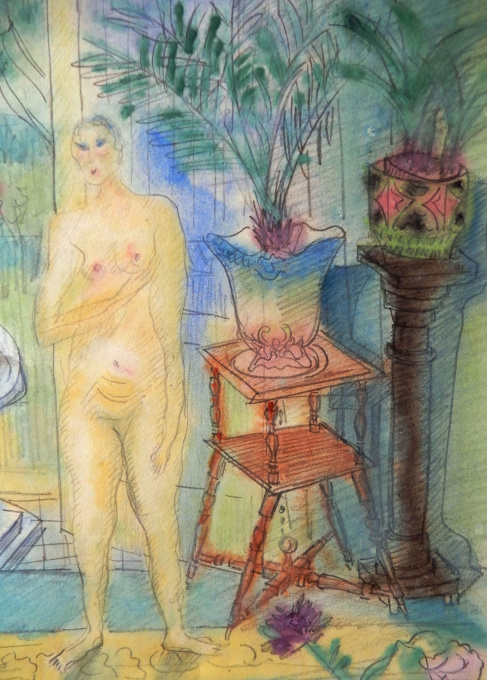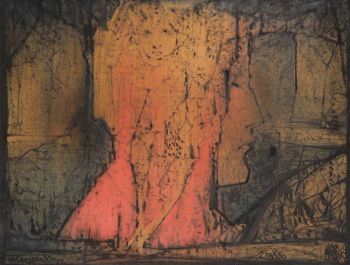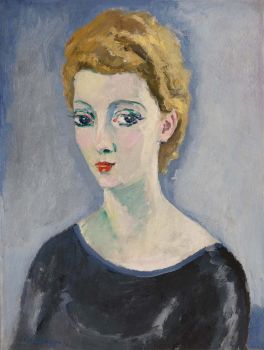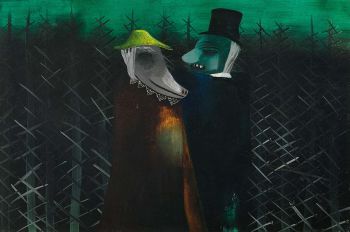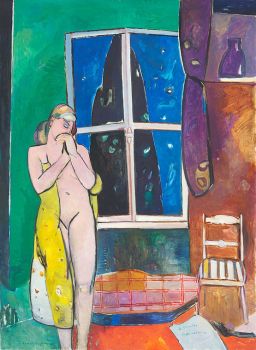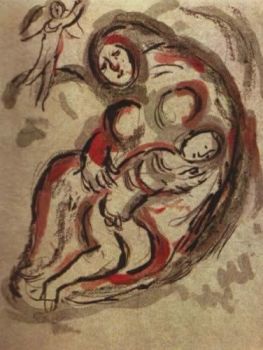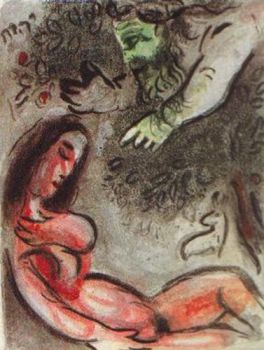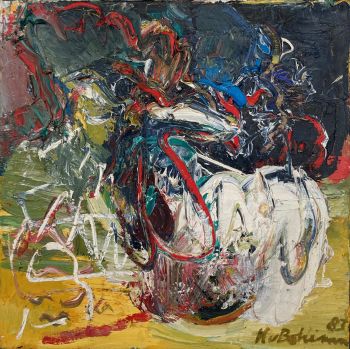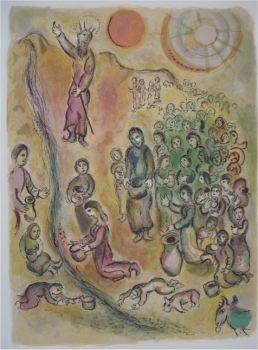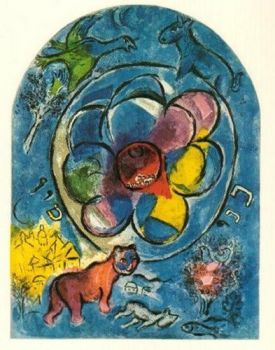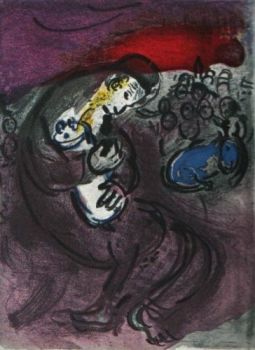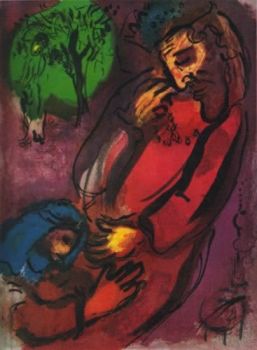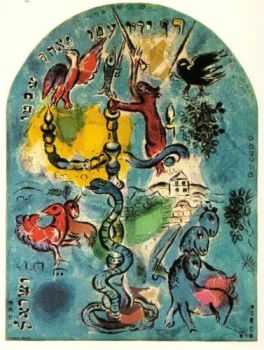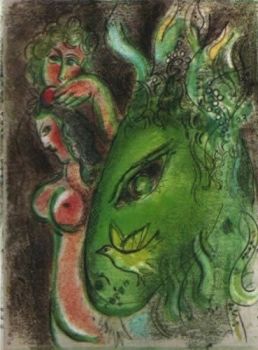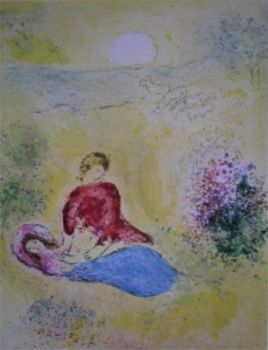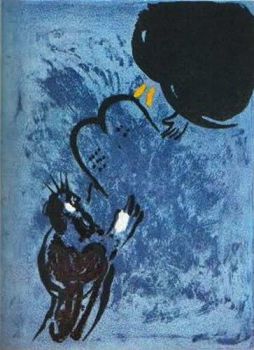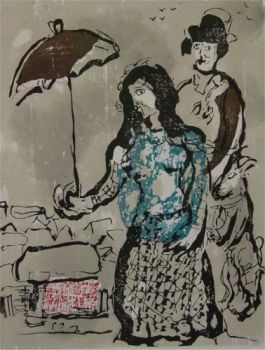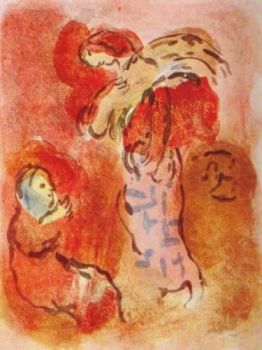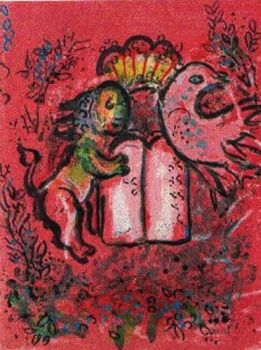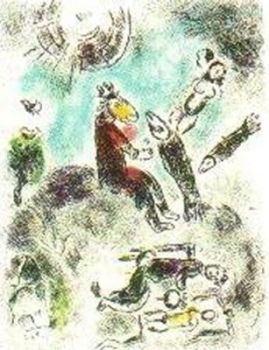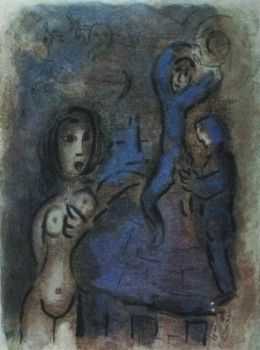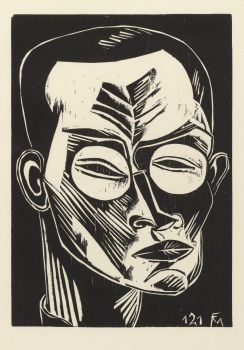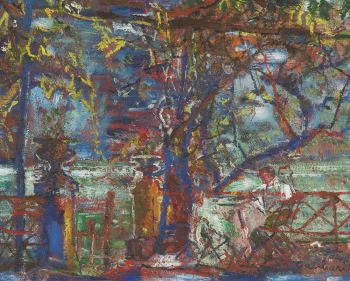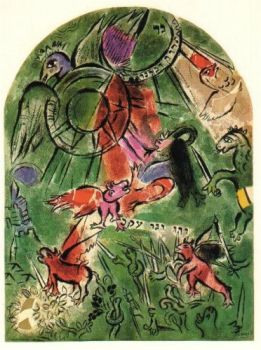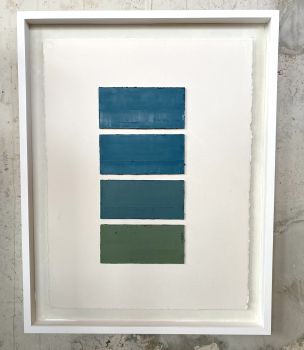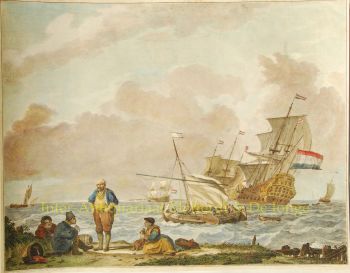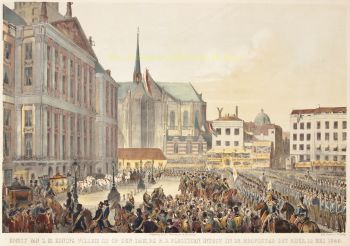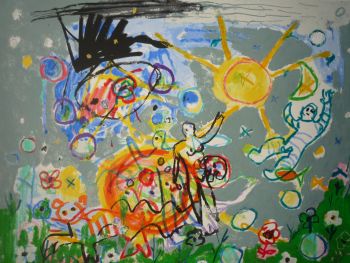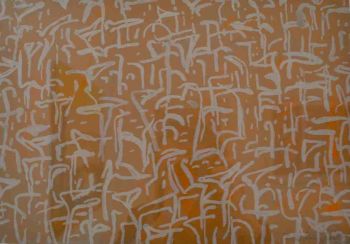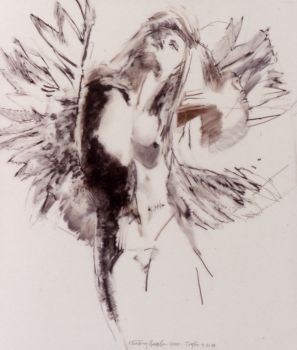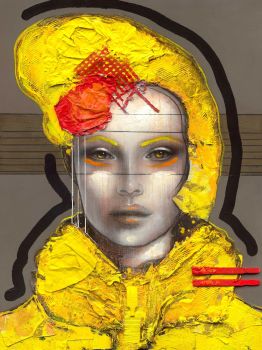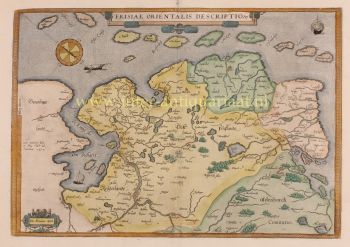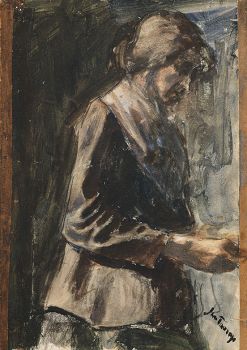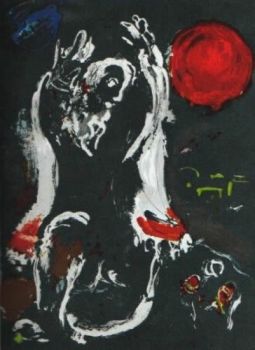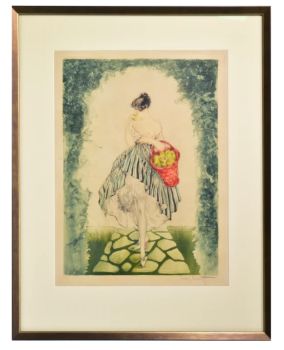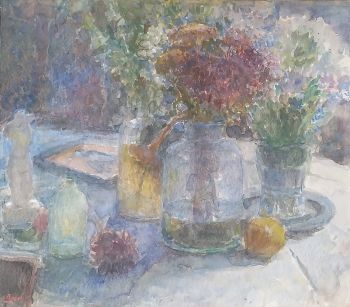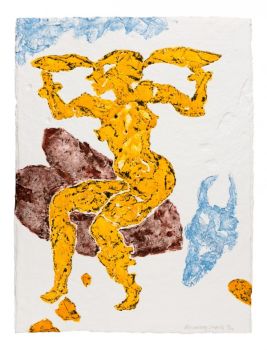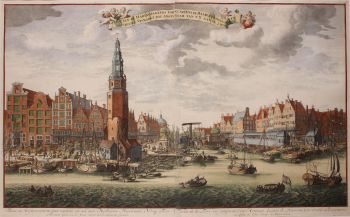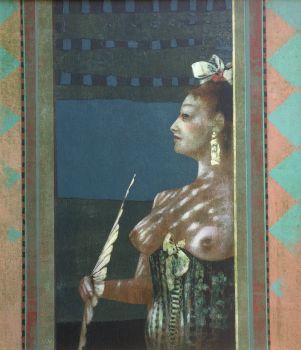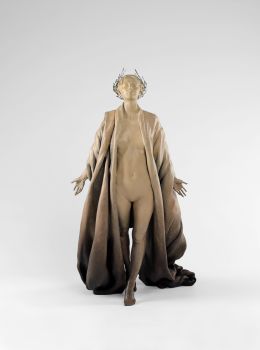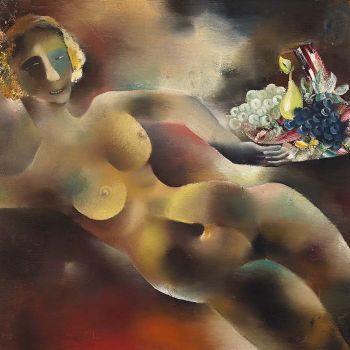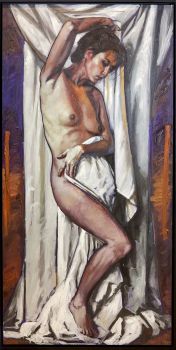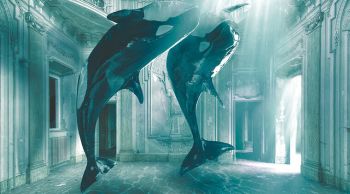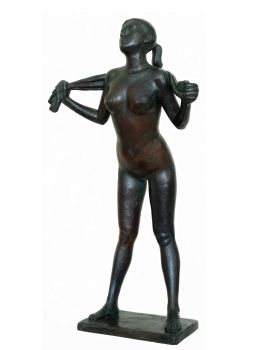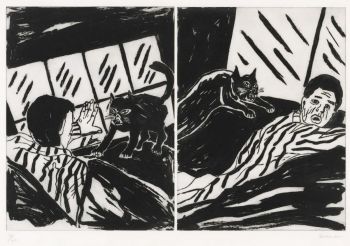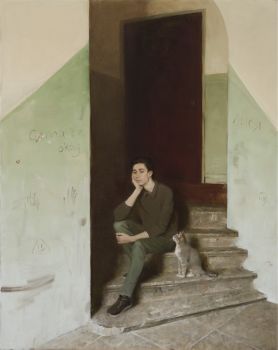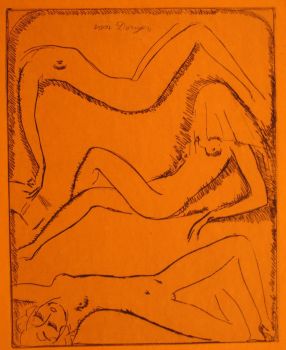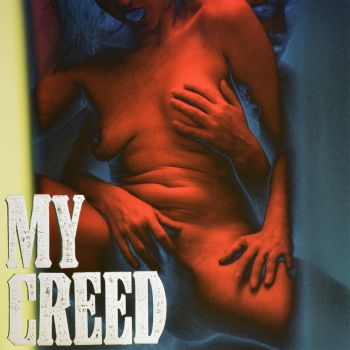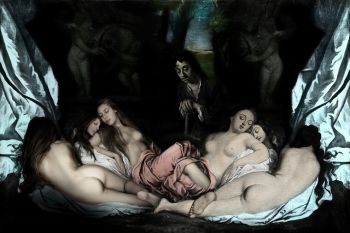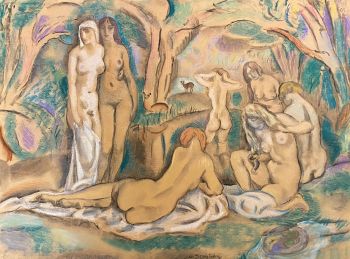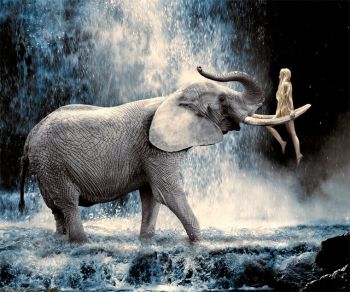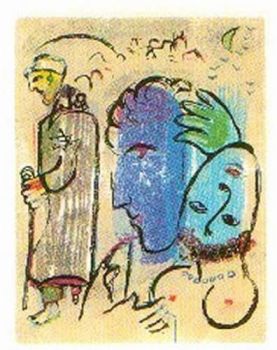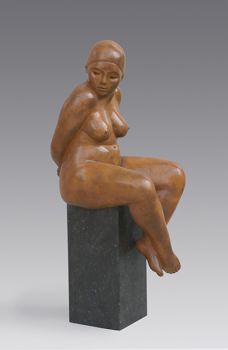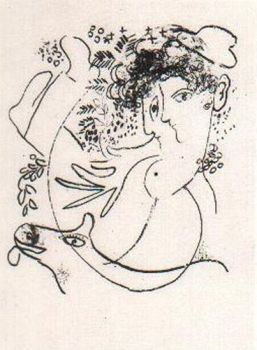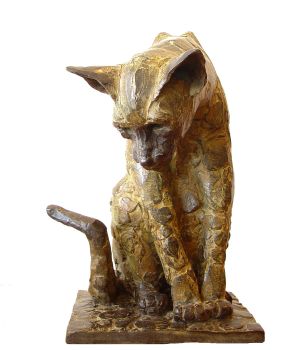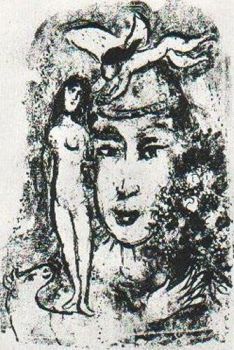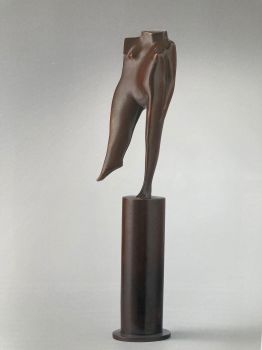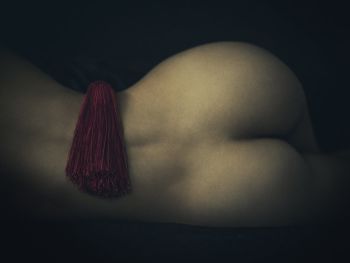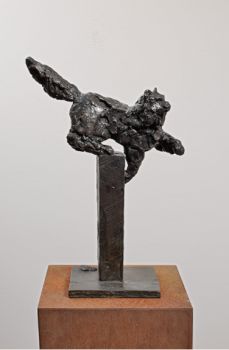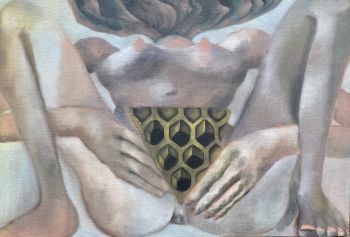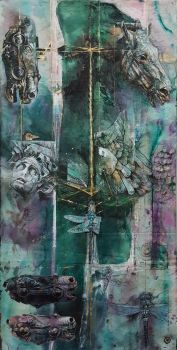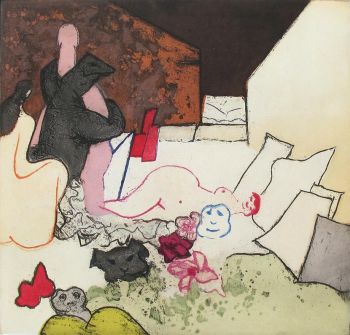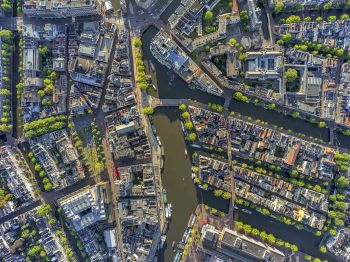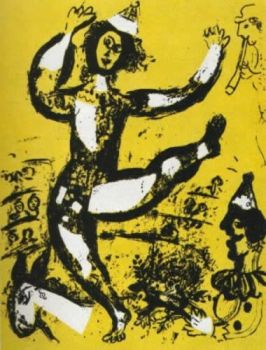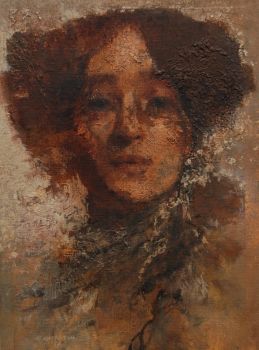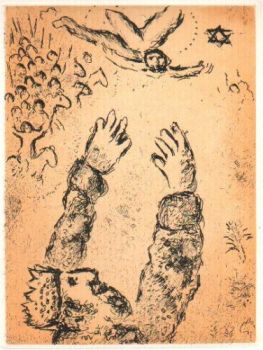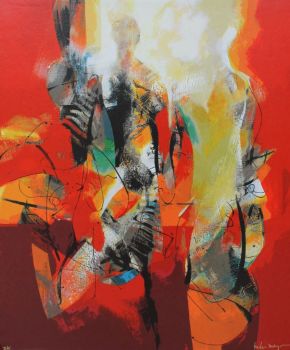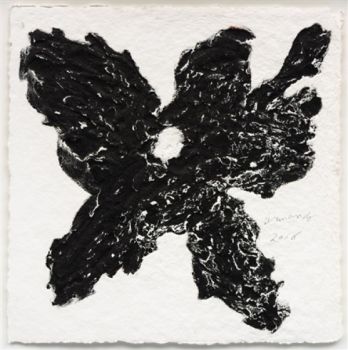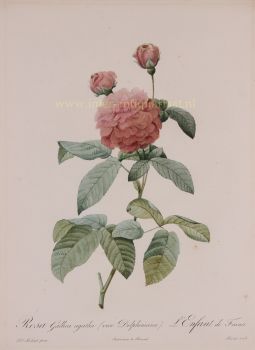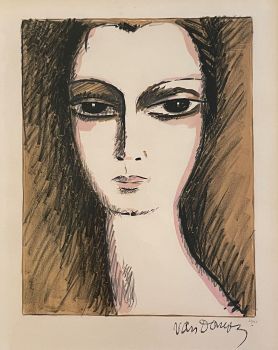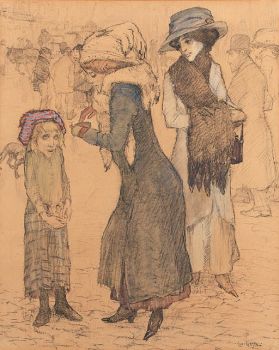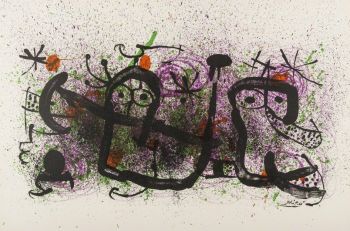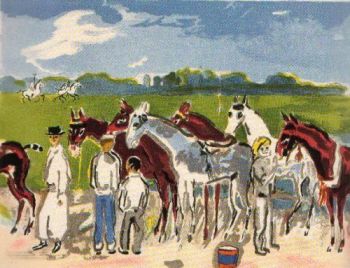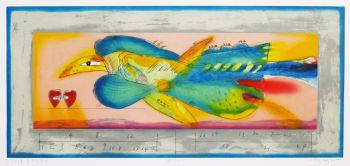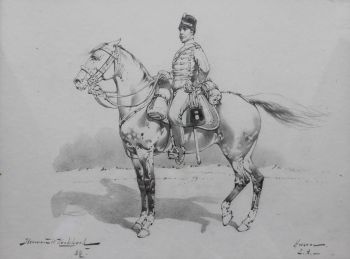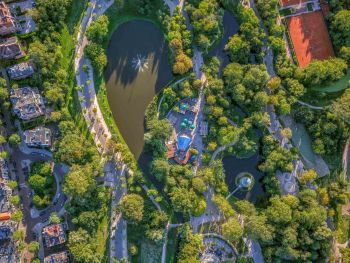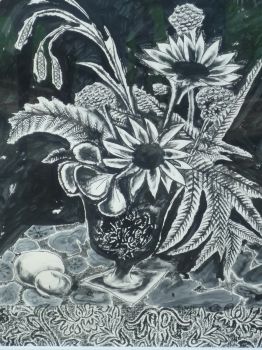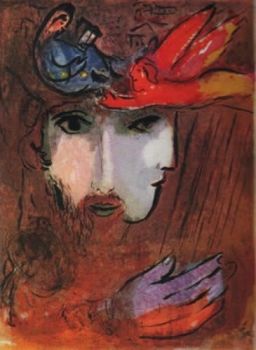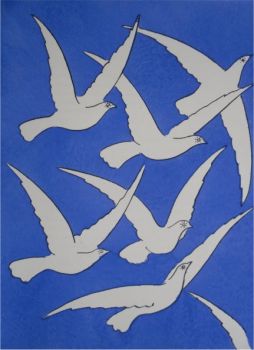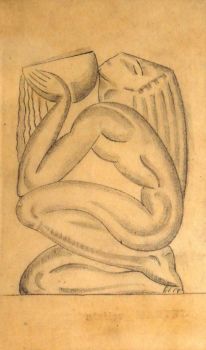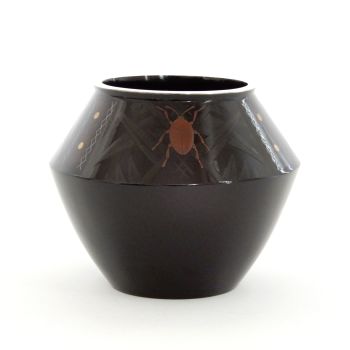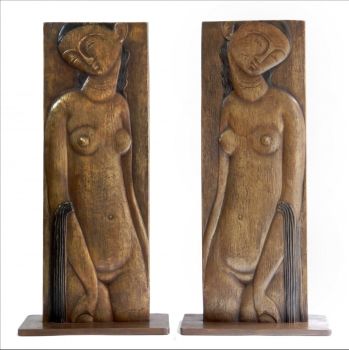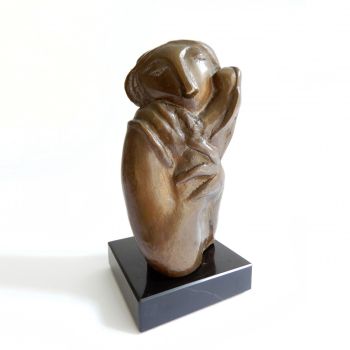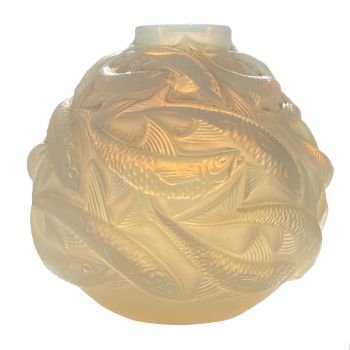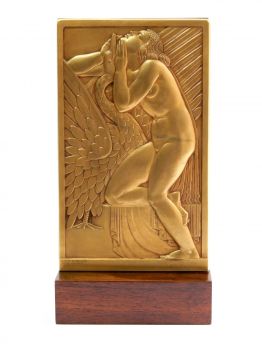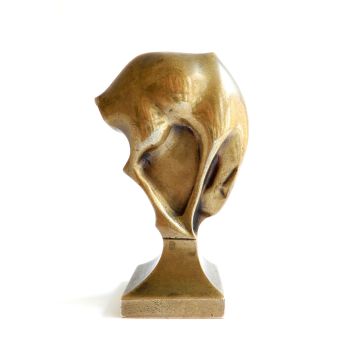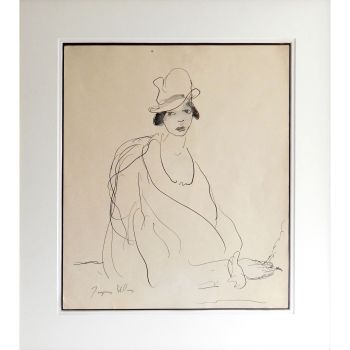Interior with nude 1920 - 1930
Armand Bouten
PapierAquatintAfdrukkenPotlood
Prijs op aanvraag
Dille Art
- Over kunstwerkBeautiful work on paper by the Dutch painter Armand Bouten. In a nearly, moving and loving way, he portrayed his wife, the artist Han Korevaar, standing naked in her interior. The way he used his colours is so beautiful and atmospheric. Special detail are also the cats, on top of the table. Cats are often found in his paintings.
Watercolour and pencil on paper, in the bottom right signed in blue with "Bouten".
The work is newly framed with museum glass and framed with an acid-free cardboard back.
Biography:
Armand Bouten (Venlo 1893 - Amsterdam 1965), grew up in Venlo and left in 1912 to Amsterdam where he followed the study for art teacher at the 'Rijksnormaalschool'. Here he met the love of his life, Han Korevaar, who was a fellow student. They stay together all their lives.
His outspoken expressive paintings give him many negative critiques. In 1922, they married and decided to go on a honeymoon to Italy, eventually ending up in Budapest where they would stay for a year.
His paintings contain recurring themes and especially the desolation of a large city is a recurring theme, often he paints brothels, music-making Gypsies, cafes and cats.
They make multiple trips and stay in many different countries where they stayed for shorter or longer periods of time. They made multiple trips to mainly Eastern Europe and Berlin. In 1924 they went to Paris, they lived and worked in Montparnasse, a district with many artists and studio homes. They made easy contacts, made contact with the German art dealer Herwarth Walden, founder of the art magazine 'Der Sturm'.
In Paris, Bouten especially painted many elegant ladies in a festive environment. His work has clear influences of Chagall, which he also becomes to knew in Paris.
His work is more optimistic in terms of colour, his ladies looked happy and challenging. Especially his watercolours from the second half of the 1920's in terms of use of colour and brushwork are different. More pastel tones, lighter and looser. Eventually his work getting sadder, women are thin and also his use of colour is getting darker.
Presumably they get to live in Brussels in the 30's, they stay there until 1953. In the 1930s he also begins to make images that clearly had African influences. Right after the liberation in 1945, he has a major exhibition at Galerie Apollo, a reputable Gallery where Ensor, Permeke, Brusselmans and Gustave de Smet also exhibited. He is known as one of the artists of the École de Paris. It will be his last exhibition. He eventually returns back to the Netherlands in 1953 and lived the last years of his life in extreme poverty.
Literature:
In 2008, the Groninger Museum held a large retrospective on the work of Armand Bouten, and a book was published with the title; 'Armand Bouten (1893-1965), Kunst maakt zichzelf', een diepgeworteld expressionisme'. Susan van den Berg. Edition Groninger Museum, 2008.
Measurements:
Artwork:
Length: 32 cm (12,6")
Width: 24 cm (9,45")
Framed:
Length: 52 cm (20,47")
Width: 43,5 cm (17,13") - Over kunstenaar
Armand Bouten (Venlo 1893-Amsterdam 1965), groeide op in Venlo en vertrok in 1912 naar Amsterdam waar hij op de Rijksnormaalschool de lerarenopleiding volgt voor tekenleraar. Hij leert hier al zijn grote liefde kennen, Han Korevaar, die als medestudente verbonden was aan de opleiding. Ze blijven hun hele leven samen.
Zijn uitgesproken expressieve schilderijen leveren hem veel negatieve kritieken op. In 1922 trouwen ze en besluiten op huwelijksreis te gaan naar Italië, uiteindelijk belanden ze in Boedapest waar ze een jaar zouden blijven.
Zijn schilderijen bevatten steeds terugkerende thema's en vooral de troosteloosheid van een grote stad is een terugkerend thema, vaak schildert hij bordelen, musicerende zigeuners, café's en katten.
Ze maken meerdere reizen en verblijven in allerlei verschillende landen waar ze kortere of langere tijd verblijven. Ze maken meerdere reizen naar voornamelijk Oost-Europa en Berlijn. In 1924 vertrekken ze naar Parijs, ze wonen en werken in Montparnasse, een wijk met veel kunstenaars en atelierwoningen. Ze maken er makkelijk contacten, zo komt hij onder andere in contact met de Duitse kunsthandelaar Herwarth Walden, oprichter van het kunsttijdschrift "Der Sturm'.
In Parijs schildert Bouten vooral veel elegante dames in een feestelijke omgeving. Zijn werk heeft duidelijke invloeden van Chagall, die hij ook in Parijs leert kennen.
Zijn werk is optimistischer qua kleur, zijn dames ogen vrolijk een uitdagend. Vooral zijn aquarellen uit de tweede helft van de jaren 20 zijn wat betreft kleurgebruik en penseelvoering anders. Meer pasteltinten, lichter en losser. Uiteindelijk wordt zijn werk steeds triester, zijn vrouwen zijn uitgemergeld en ook zijn kleurgebruik wordt steeds somberder.Vermoedelijk komen ze begin jaren 30 in Brussel te wonen, ze verblijven daar tot 1953. In de jaren 30 begint hij ook beelden te maken die duidelijk Afrikaanse invloeden hadden.
Vlak na de bevrijding in 1945 heeft hij een grote expositie bij Galerie Apollo, een gerenommeerde galerie waar ook Ensor, Permeke, Brusselmans en Gustave de Smet ook exposeerden. Hij wordt daar nadrukkelijk gerekend tot de École de Paris. Het is zijn laatste expositie. Hij keert uiteindelijk in 1953 naar Nederland terug en leeft de laatste jaren van zijn leven in grote armoede.
Literatuur:
In 2008 heeft het Groninger Museum een grote overzichtstentoonstelling gehouden over het werk van Armand Bouten, er is toen ook een boek verschenen met de titel; 'Kunst maakt zichzelf', een diepgeworteld expressionisme'. Armand Bouten (1893-1965)', Susan van den Berg. Uitgave Groninger Museum, 2008.
Bent u geïnteresseerd om dit kunstwerk te kopen?
Artwork details
Related artworks
- 1 - 1 / 1
- 1 - 4 / 24
Onbekende Kunstenaar
Set of eight gouache drawings1799 - 1801
Prijs op aanvraagRobert Schreuder Antiquair
1 - 4 / 24- 1 - 4 / 24
- 1 - 4 / 24
Onbekende Kunstenaar
Japanese art deco lacquervase with Scarab beetle motif1920 - 1950
Prijs op aanvraagDille Art
1 - 4 / 12


